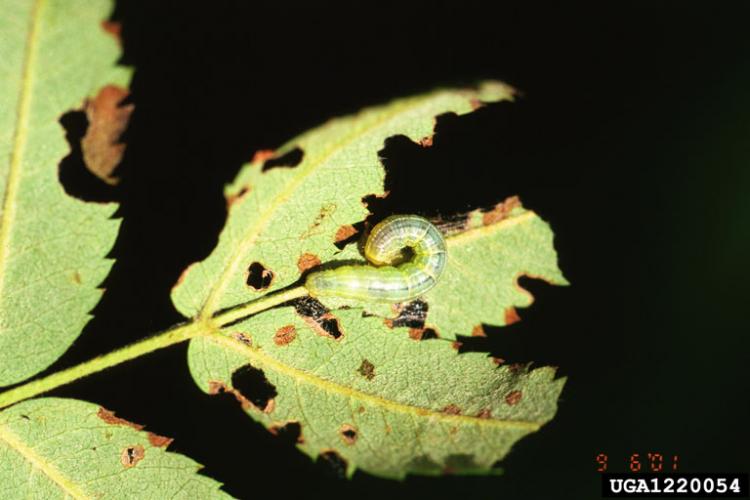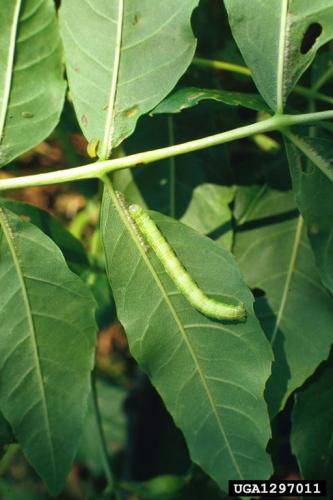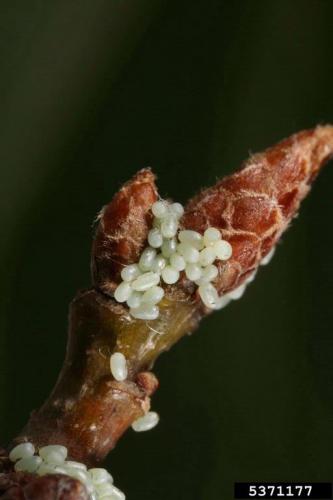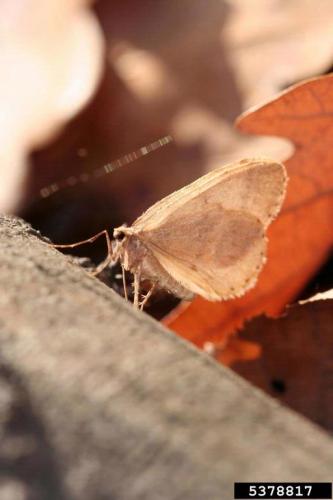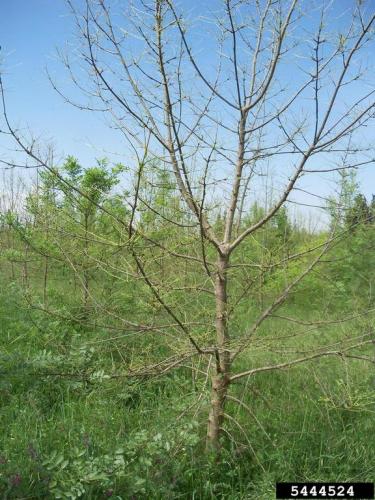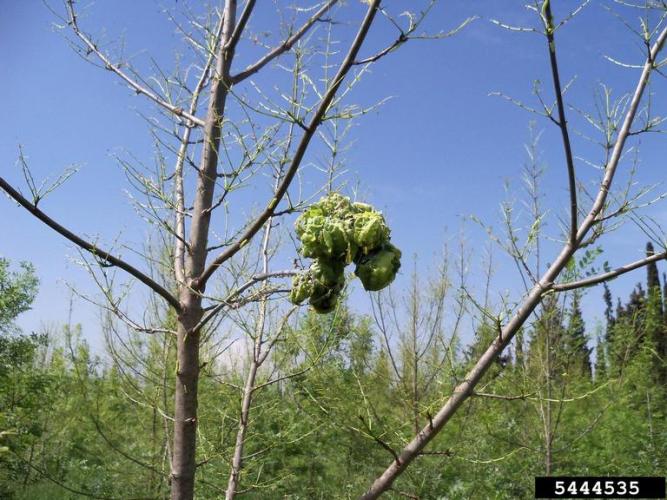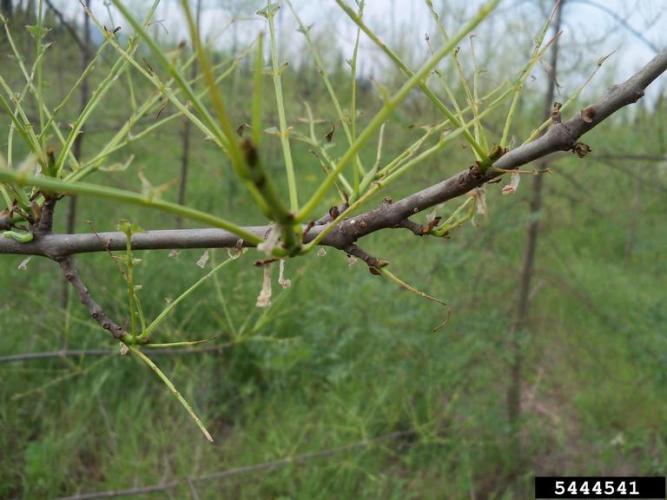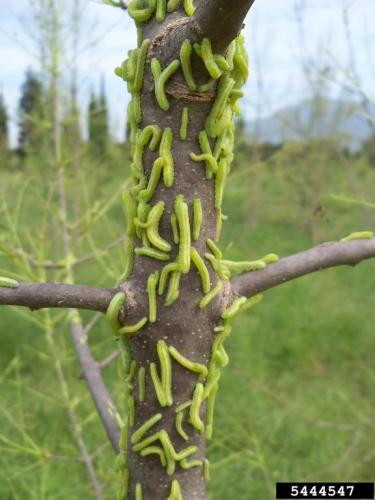Winter Moth
Identification
The winter moth (Operophtera brumata) feeds on deciduous plants including maple, oak, cherry, basswood, ash, white elm, apple, blueberry, and other perennials. It is commonly observed in late fall/early winter as a white-ish adult moth and, in spring, as a tiny green caterpillar.
Winter moth caterpillars feed on the leaves of their host species. High populations of the pest can completely defoliate the host plant, inhibiting its ability to grow and leaving it vulnerable to other insects, diseases, and eventual mortality.
See image gallery above for signs and symptoms.
Biology
Origin
The winter moth is native to Europe. It was transported to the United States via Nova Scotia in the 1950s, most likely within the soil of ornamental landscape trees.The invasive insect has since spread into Eastern and Western Canada and the United States.
Life Cycle
Adult winter moths emerge from the ground in November and December. The fully developed adult moths immediately begin the reproductive process. The female winter moth, unable to fly, climbs up trees or buildings and attracts males to her with pheromones. After mating females lay a cluster of approximately 150 bright orange eggs under tree bark and in crevices; immediately dying following the dispersal of the eggs.
In March and April, when temperatures reach approximately 55°F, the eggs hatch into smooth green inchworms. The newly hatched caterpillars are approximately a half inch to an inch in length and have a white stripe lengthwise on each side of their bodies. The young caterpillars disperse up into the plant's canopy by spinning a strand of silk and riding wind currents up, a method known as “ballooning”. Once in the canopy the caterpillars feed on the foliage, both open leaves and within tree buds. In mid-June, the caterpillars migrate into the soil to pupate. Fully grown winter moths will emerge from these pupae in November and December.
threat
The winter moth is a species of particular concern because it damages a wide variety of tree and agricultural crop species. High populations of the pest can cause complete defoliation. Repeated years of defoliation may contribute to tree decline.
Vermont Distribution
Winter moth has never been detected in Vermont.
Citations
Photo Credit
Dimitrios Avtzis, NAGREF-Forest Research Institute, Bugwood.org
Fabio Sterguic, Universita di Udine, Bugwood.org
Gyorgy Csoka, Hungary Forest Research Institute, Bugwood.org
Hannes Lemme, Bavarian State Research Center for Agriculture, Bugwood.org
Milan Zubrik, Forest Research Institute - Slovakia, Bugwood.org
